“Oooo, look at that one!”
There’s something indescribably satisfying about foraging.
In a world where our food supply is pretty much homogenous, wild harvesting has become that much more fun.
Don’t get me wrong – foraging is nothing new for me. Having grown up in a family where we played “name the tree” on road trips, it’s pretty much in my blood.
In fact, it’s unusual for me to finish a hike without sampling something from the trail. My husband doesn’t even bother asking “What are you eating?” anymore.
Of course, there are some plants that require a bit of special prep to be safe to eat.
In today’s post, I’ll share a little more about fiddleheads, a seasonal and delicious treat I’ve been foraging in Alaska… and a recipe that puts them to good use.
Foraging for Fiddleheads in Alaska
Ferns are ancient plants, dating back to at least Paleozoic times, with a history of use in cultures across the globe. Fiddleheads are baby fern fronds that emerge from the soil tightly coiled up, giving them the appearance of the head of a fiddle or violin.
They are a succulent, mild-flavored, and welcomed addition to my meals after months of shipped-in, flavorless produce from the lower 48 (see this post).
The window for harvesting fiddleheads is pretty short, because once they unfurl into a fern frond, they’re inedible.
So, they make a good excuse to get out and explore, even when the weather isn’t the best.
According to my plant books, fiddleheads are best harvested when the stalks are less than the height of your hand, but I don’t know how valid that claim is. They tend to grow on partly sunny hillsides in the forest (though I’ve found plenty in boggy, lowland areas). They can be hard to spot, since they grow so close to the ground and blend in easily, but if you’re lucky, you can see the dead fern leaves from last year and hone in on them.
As with any foraging, you don’t want to over-harvest and kill the plant. For fiddleheads, I take no more than 1/3 of the plant so there are plenty around for next year.
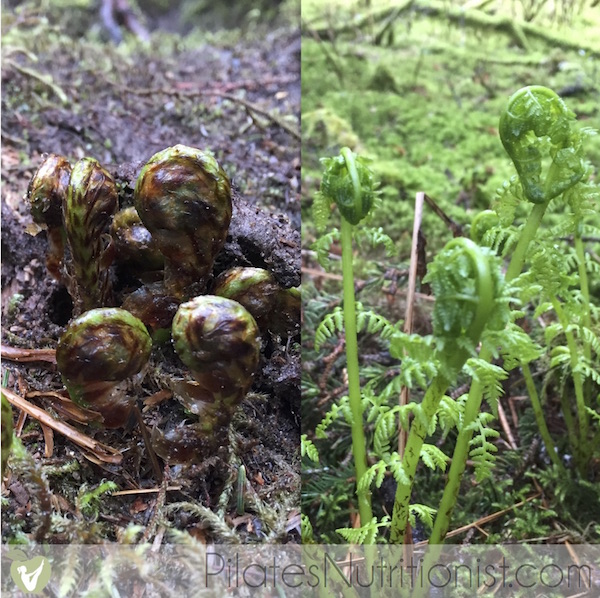
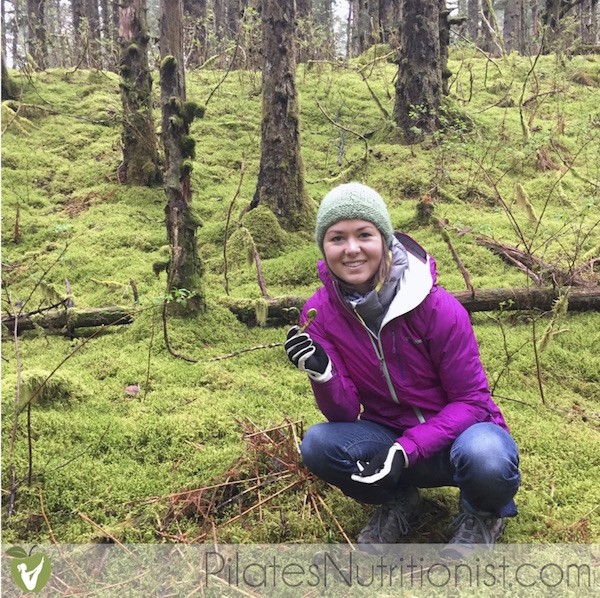
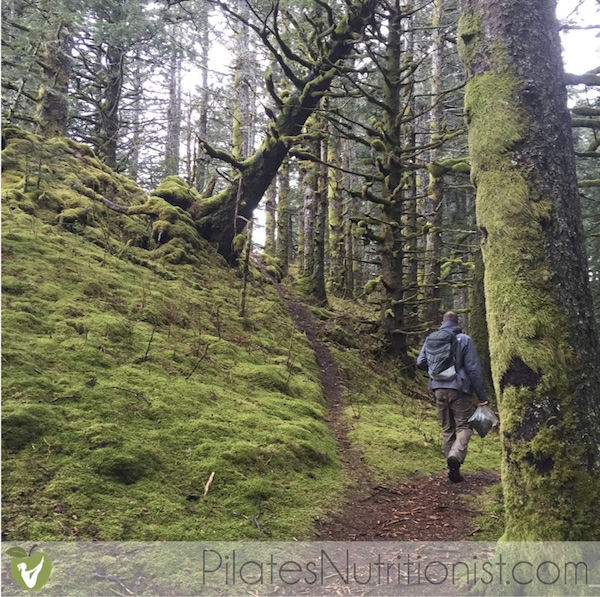
How to Prepare Fiddleheads
Once you’re all foraged out, get ready for the time-intensive prep. Fiddleheads come with a brown papery husk attached, that you must scrub off before eating – for me, scraping it off with my fingernail under running water was easiest.
Expect to spend more time cleaning fiddleheads than you did foraging for them, but I promise it’s well worth the effort.
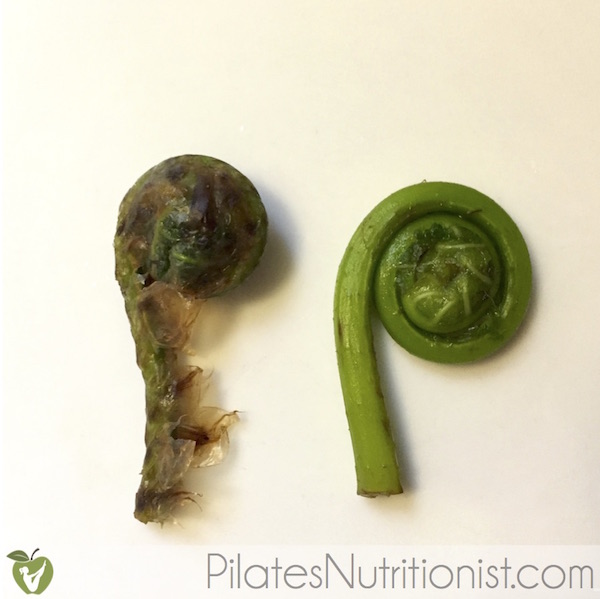
Caution!
Some varieties of ferns are toxic, so if you’re not sure, consult a plant expert in your area before eating.
Fiddlelheads should not be eaten raw, since they contain the enzyme, thiaminase, which destroys thiamin (vitamin B1) and can lead to a deficiency if consumed in excess. Cooking deactivates thiaminase.
I choose to blanch fiddleheads before preparing in other dishes. They can be used just like green beans or asparagus, so your imagination is the limit when preparing them.
Since they are such a striking and unusually-shaped vegetable, I prefer to cook them whole.
Below, you’ll find a simple low-carb, grain-free recipe for Fiddlehead Quiche. If you can’t find fiddleheads, you can substitute asparagus, cooked kale, or cooked spinach in its place.
Fiddlehead Quiche
Crust
- 1/2 cup coconut flour
- 1/2 cup ground cashews (Trader Joe’s Just Cashew Meal works, or you can grind your own in a food processor)
- 1/4 teaspoon sea salt
- 1/4 teaspoon garlic powder
- 4 Tbsp butter, melted
Filling
- 1 cup+ fiddleheads, cleaned
- 2 slices bacon, chopped
- 6 eggs (ideally, from pasture-raised chickens)
- 2 cups shredded cheddar cheese (ideally from grass-fed cows)
- 1/2 teaspoon sea salt
- black pepper
Instructions
Prepare the crust
-
Mix all ingredients, press into a pie plate in one even layer. Blind bake at 350 F for 10 minutes, or until lightly golden brown. Let cool.
Prepare fiddleheads
-
Blanch fiddleheads in a pot of boiling water. Cook for 1-2 minutes, then place in a strainer. Rinse under cool water to stop the cooking process and preserve the bright-green color. Pat dry.
Assemble the quiche
-
In a medium bowl, mix eggs, half of the cheese, salt, and pepper.
-
Place bacon, fiddleheads, and remaining half of the cheese into the crust.
-
Pour egg mixture over the top.
-
Bake at 350 F for 35-45 minutes, or until cooked through.
-
Let sit for 15 minutes before serving.
Recipe Notes
NOTE: If you do not eat dairy, use coconut oil for the crust. Omit cheese from filling, add an additional 3+ eggs, and use one full teaspoon of salt.
Why eggs from pasture-raised chickens & cheese from grass-fed cows?
Have you ever eaten fiddleheads?
How did you prepare them? Would you eat them again?
Tell me about it in the comments below.
Until next week,
Lily
PS – Fiddlehead quiche most definitely avoids the “healthy breakfast mistake.” Find out if you’re accidentally falling into that trap here.


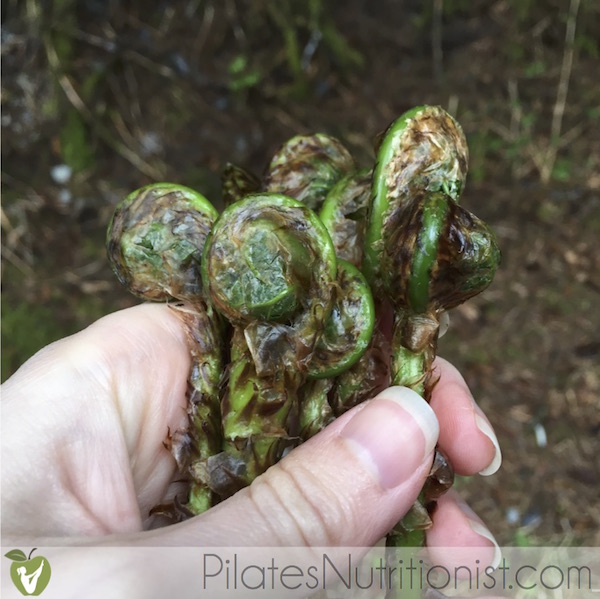
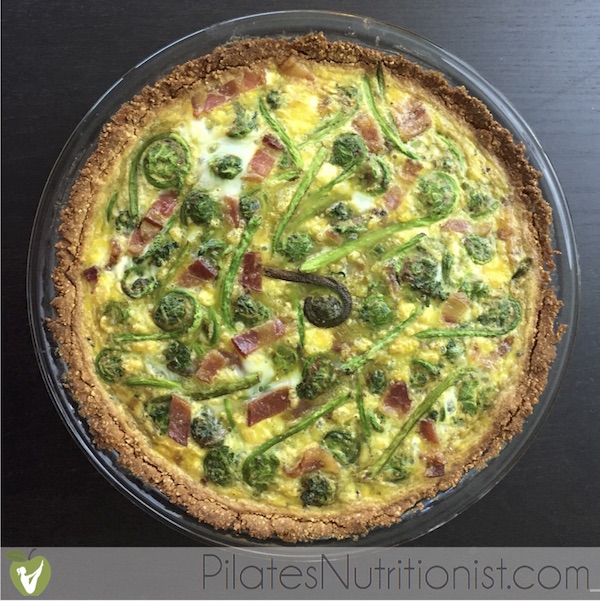









Never heard of fiddleheads! They look like cute little brussel sprouts almost if growing from the ground!
I’ve never had these either but I did pick some ferns the other day to display about the house…I’ll look for the fiddleheads next time – recipe looks delish!
I just had fiddlehead a for the first time this week. Delicious!
Lily, so much is happening in your world. I have missed getting your weekly blog. Will you please re-include me? I would appreciate this. I learn so much from you, especially how to include vegetables in everything. I adapt your recipes according to my own documented allergies.
I know I will never qualify for Gestational Diabetes, but I hope to prevent Type II Diabetes by eating as you recommend.
Inspiring, very inspiring. Plus, the pictures are breathtaking.
Thank you.
“Mayflower”
Hi there, Thanks for your kind words. If for any reason you’re not receiving my emails, I suggest re-subscribing by entering your name or email into any one of the opt-in boxes on my website. Also, check your spam folder just in case. 🙂
This is probably one of the first times I’ve ever seen fiddleheads! I’m really curious as to how they taste and what health benefits they offer!
The flavor of fiddleheads is very mild in my opinion. Hope you get to try them someday, Cassie!
Really appreciate your simple yet thorough description of what exactly to pick! Foraged some of ostrich fiddles yesterday and a quiche sounds delish.
I think I’ll stick to my traditional crust but I’m excited to try your version if the fillings. No milk, eh? I’ll give it a shot… probably add some thai chilies and all my left over cheeses! Thanks!!
Ps. Beautiful photos.
Enjoy! I’m sure any quiche filling and crust of your choice would work just fine with fiddleheads. They really are delicious with eggs.